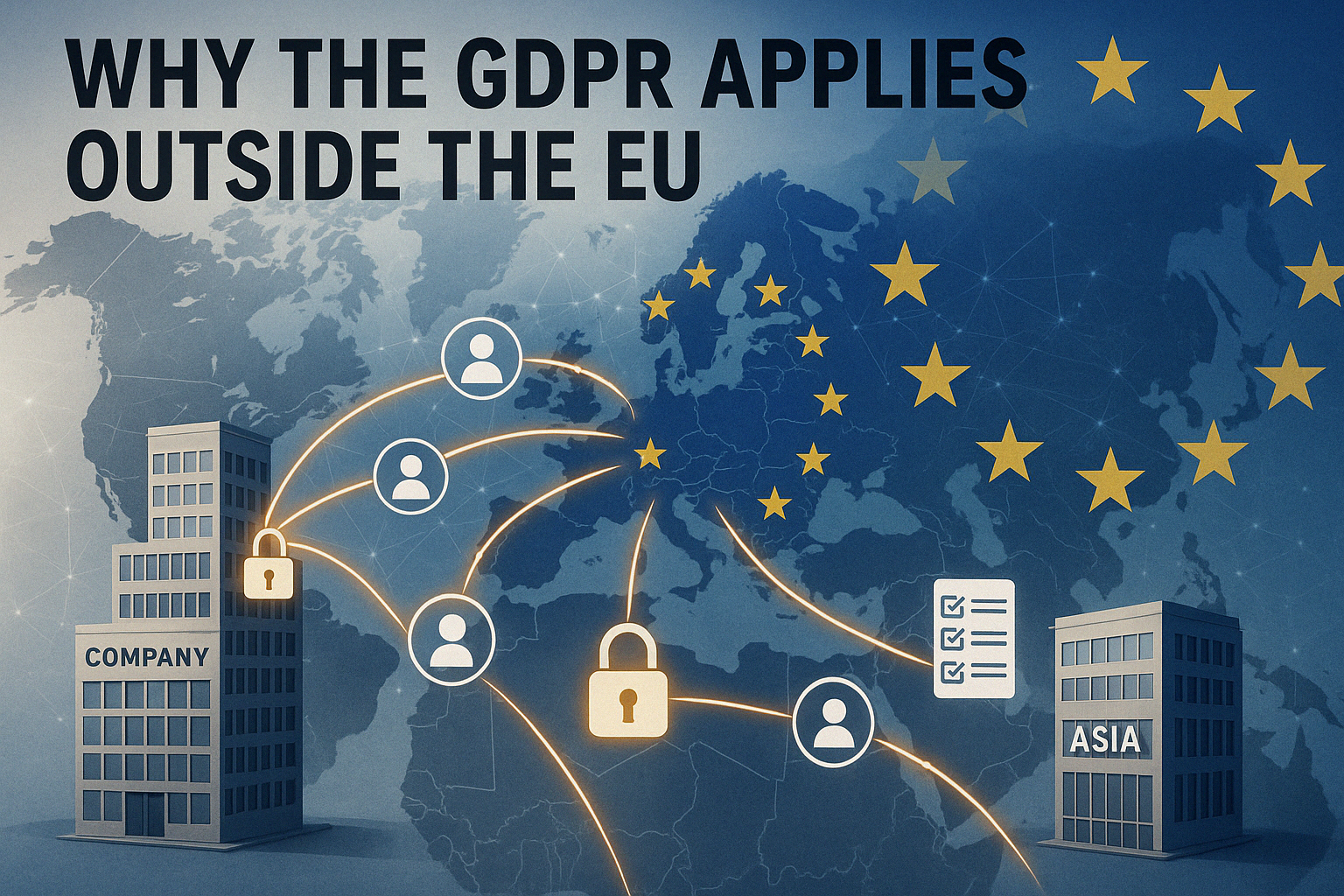Why the GDPR Applies Outside the EU
One of the most persistent myths about the GDPR is that it applies only within European borders. This misconception can lead to noncompliance and serious legal risks. In truth, the GDPR’s territorial scope is explicitly designed to protect the personal data of individuals in the EU—even when that data is handled by companies based outside the Union.
The regulation’s global impact is a fundamental concept for privacy professionals and is a heavily tested area in the CIPP/E certification. Understanding this broad applicability is not only crucial for legal compliance but also essential knowledge for anyone working with EU user data, regardless of their location.
The GDPR’s Territorial Scope Explained
The foundation for the GDPR’s worldwide applicability lies in Article 3, which outlines the regulation’s territorial scope. This article makes it clear that GDPR compliance obligations are not limited to companies within EU borders.
There are two main scenarios where the GDPR applies to organizations outside the EU:
- Establishment in the EU: If a company has any branch, office, or stable arrangement within the EU, it must comply with the GDPR for all data processing related to its EU operations.
- Targeting Individuals in the EU: Even if a business is entirely outside the EU, the GDPR applies if it offers goods or services to individuals in the EU or monitors their behavior online.
For those studying for the CIPP/E exam, Article 3 is a cornerstone of understanding global privacy law. It underscores that location is not the sole factor—intention and activity involving EU data subjects are key.
Offering Goods or Services to Individuals in the EU
Merely having a website that’s accessible from the EU doesn’t automatically trigger GDPR obligations. What matters is the business’s clear intention to offer goods or services to individuals in the EU.
Factors that suggest this intention include offering pricing in euros, translating content into EU languages, or providing shipping options to EU countries. These signals demonstrate that the company is actively targeting EU residents, and therefore falls within the scope of the GDPR.
Understanding this distinction is vital. It prevents businesses from assuming they are exempt just because they’re physically outside the EU.
Monitoring Behavior of EU Data Subjects
Monitoring the behavior of people in the EU also subjects companies to the GDPR. This typically involves tracking individuals for the purpose of profiling or behavioral analysis.
Common examples include the use of analytics tools, cookies that track user activity, and personalized advertising based on browsing habits. These are standard practices among tech companies, platforms, and online marketers.
If such behavior is directed at users located in the EU—even unintentionally—it can trigger GDPR obligations. This is especially relevant for companies offering apps, platforms, or analytics services that may gather behavioral data globally.
Key Risks for Non-EU Organizations
Non-EU companies cannot ignore the GDPR. Enforcement is real, and fines can be steep. Supervisory authorities within the EU have the power to coordinate cross-border investigations and impose sanctions on companies that violate the regulation.
Even if a company is based entirely outside of Europe, it can still be held accountable. The well-known Schrems II case and enforcement actions against Meta underscore how non-EU entities are not beyond the reach of European regulators.
For businesses that handle EU data, understanding their exposure under the GDPR is critical—not just legally, but reputationally. Ignorance of the regulation offers no shield from penalties.
How Non-EU Businesses Can Comply with the GDPR
Companies outside the EU that are subject to the GDPR must adopt specific measures to ensure compliance. These include:
- Appointing an EU Representative: Non-EU companies must designate a representative within the EU to serve as a point of contact for supervisory authorities and data subjects.
- Updating Privacy Notices: Transparent, accessible privacy policies are essential to inform users of data processing practices.
- Lawful Basis for Processing: Under Article 6, businesses must establish a legal basis for every processing activity—such as consent, legitimate interest, or contractual necessity.
- Data Subject Rights: Organizations must respect and enable data subject rights, including access, rectification, erasure, and objection.
- DPIAs: Conducting Data Protection Impact Assessments is necessary when high-risk processing is involved.
For CIPP/E candidates, these accountability mechanisms are central to the curriculum and real-world privacy management.
The Role of SCCs and Data Transfer Tools
When data is transferred from the EU to a third country, companies must use approved mechanisms to safeguard it. Standard Contractual Clauses (SCCs) are the most widely used tool under Chapter V of the GDPR.
However, since the Schrems II ruling, companies must also perform Transfer Impact Assessments (TIAs) to ensure the recipient country offers adequate data protection. The EU-U.S. Data Privacy Framework is a recent development that aims to simplify transatlantic data flows, but businesses must still verify compliance.
Understanding these tools is vital for lawful international data transfers and is heavily emphasized in CIPP/E training.
Understanding Scope is Key to Global Compliance
The GDPR was never intended to be limited to the EU’s geographical boundaries. Its aim is to protect the data of individuals in the EU—regardless of where the processing organization is located.
This means that non-EU businesses must assess their activities carefully. Whether they offer services to EU residents or monitor their behavior, they may fall under the GDPR’s scope.
For privacy professionals and CIPP/E candidates, mastering Article 3 and the concept of territorial scope is essential. It’s not just a legal technicality—it’s a foundation for building global data protection programs that meet modern compliance demands.



